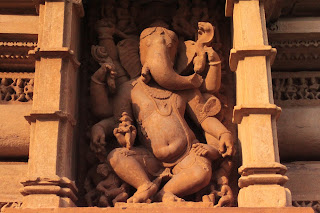I lived in the Austrian capital, Vienna, for four years from 1985 to 1989, when my father served as the Indian Ambassador there. After I started my international travels, I have visited Austria several times, in 2001, 2008, 2009, 2011 and 2018. I find it to be one of the most beautiful countries in the world, and it draws me like a magnet, over and over again.
In 2008, I spent around a week in Austria, and from Vienna, I did several morning-evening trips on the country's extremely efficient train system. I managed to cover several Austrian towns, including Klagenfurt. Apart from Vienna, other Austrian towns are small enough to cover in a day, though they are so pretty that one can certainly stay there for far longer if one has the luxury of time!
Klagenfurt, officially called
Klagenfurt am Worthersee, is the capital of the Austrian federal
state of Carinthia,
and it has a population of just over 100,000. It is Austria’s 6th largest city, after Vienna, Graz,
Linz, Salzburg and Innsbruck. It lies in the south of the country, along the Worthersee, a
picturesque lake that is about 16.5 km long and 1.5 km wide.
As per legend, Klagenfurt was founded
after a group of brave men killed the Lindwurm, a
winged dragon that fed on virgins. Historically, the city was founded by Duke
Hermann in the 12th century. His son, Duke Bernhard von Spanheim,
moved the town to a safer position as it was prone to frequent flooding. In the
following centuries, the town had its share of misfortune, with fires,
earthquakes, locust attacks and attacks from the Ottomans.
In 1518, Emperor Maximilian I handed
over the town to the nobility of the Duchy after he was unable to rebuild it.
They managed to rebuild the town. In 1809, Napoleon’s troops destroyed the city
walls. In 1863, Klagenfurt became an important railway junction, being in the
geographic centre of the region. This led to a boost in the town’s economy.
After World War I, Klagenfurt was
occupied by the Kingdom of the Serbs, Croats and Slovenes. However, they
withdrew in 1920 after a plebiscite where the inhabitants opted to remain a
part of Austria. Klagenfurt suffered a lot of damage in World War II, but the
town was subsequently restored. In 1961, Klagenfurt became the first town in
Austria to get a pedestrian zone.
Neuer Platz is
a large square in the heart of the city. It has the Lindwurm Fountain and a
Statue of Empress Maria Theresia, the Habsburg
empress who reigned from 1745 to 1765. The Lindwurm
Fountain , depicting a legendary dragon-like creature, dates back to 1593, and
has a statue of Hercules next to it, added in 1633.
 |
| Lindwurm Fountain, Neuer Platz |
 |
| Statue of Empress Maria Theresia, Neuer Platz |
Alte Platz is
a pedestrian area in the city centre. It has many baroque buildings, including
the Altes Rathaus (the Old Town Hall).
The Stadtpfarrkirche lies at the northern
end of Alte Platz.
 |
| Alte Platz |
Stadtpfarrkirche was inaugurated in
its current form in 1697, after the previous church was damaged by fore and
later by two earthquakes. It has a 97 meter tall tower. It is also known as the
St Egid Church.
 |
| Stadtpfarrkirche |
Heiliggeistkirche is an old church
that was rebuilt in 1582. The monastery adjoining it came up in 1678. When the
French occupied in 1809-10, the church and monastery served as a stable and
camp. The church suffered damage in World War II but was renovated.
 |
| Heiliggeistkirche |
Landhaus was completed in
1590. It has two onion shaped towers and an arcaded courtyard. It is famous for
its Great Emblem Hall, which has 665 coats of arms from Carinthia.
 |
| Landhaus |
Worthersee Mandl is
a small fountain erected in 1962 by the local sculptor Heinz Goll. It has a small man
with his hand resting on a barrel, and from the barrel, an endless stream of
water flows into the fountain.
 |
| Worthersee Mandl |
Minimundus is
a miniature park that has models of famous buildings from across the world,
built on a ratio of 1:25. The park has over 150 models. The park opened in 1958. It is spread over 26,000 square meters. The proceeds go towards a charitable organization, "Save the Child".
 |
| Vienna's Stephansdom, Minimundus |
 |
| Paris' Eiffel Tower, Minimundus |
 |
| Paris's Arc de Triomphe, Minimundus |
 |
| Vatican City's St Peter's Basilica, Minimundus |
Minimundus has models of Vienna’s Stephansdom, Paris’ Eiffel Tower and Arc de Triomphe, the Vatican City’s St Peter’s Basilica, Barcelona’s Sagrada Familia, Sydney’s Opera House, Toronto’s CN Tower, Singapore’s Raffles Hotel, Agra’s Taj Mahal , Pisa’s Leaning Tower, Prague’s Old Town Hall and Philadelphia’s Independence Hall, to name a few.
 |
| Barcelona's Sagrada Familia, Minimundus |
 |
| Sydney's Opera House, Minimundus |
 |
| Toronto's CN Tower, Minimundus |
 |
| Singapore's Raffles Hotel, Minimundus |
Klagenfurt was beautiful. Its location by the scenic Worthersee made it that much prettier. Travelers to Austria should certainly consider adding it to their list of places to visit. And being a relatively small town, one can get a good flavour of it in just a day.



























































